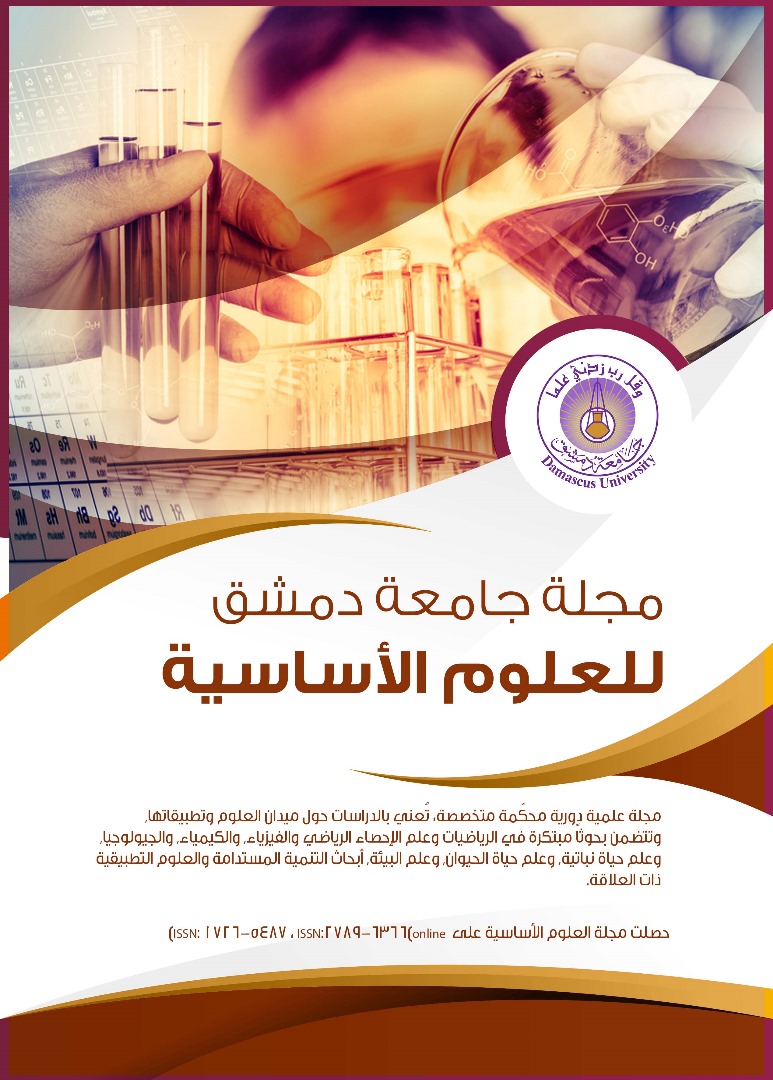تأثير التطفير الكيميائي باستعمال EMS في بعض الصفات المورفولوجية والفيزيولوجية والإنتاجية لنبات فول الصويا (Glycine max (L.) Merr.)
الكلمات المفتاحية:
فول الصويا، الطفرات، EMSالملخص
تهدف برامج التحسين الوراثي إلى الحصول على نباتات ذات صفات مرغوبة من الناحية الانتاجية، الأمر الذي ينعكس على الناحية الاقتصادية. يعد التطفير الكيميائي أحد الطرائق المستعملة في تحقيق ذلك. تم في هذا البحث دراسة تأثير عدة تراكيز من مادة Ethyl Methanesulfonate (EMS) (0.1-1% خلال 4 ساعات) في بعض الصفات المورفولوجية والفيزيولوجية والإنتاجية لنبات فول الصويا المزروع في البيت الزجاجي خلال عام 2021 م. أظهرت النتائج أن زيادة تركيز المادة المطفِّرة تزيد من معدل الطفرات لاسيما في صفات الأوراق الشكلية (اللون، عدد الوريقات، التحام الوريقات، شكل الوريقات، وجود التجعد، وجود التبرقش)، إضافة إلى تغيرات إيجابية وسلبية في بعض الصفات الفيزيولوجية والشكلية والإنتاجية (نسبة الإنبات (%)، سرعة استطالة النبات (%)، ارتفاع النبات (سم)، عدد الأوراق/نبات، عدد الأزهار/نبات، عدد القرون/نبات، عدد البذور/قرن، عدد البذور/نبات، وزن 100 بذرة (غ))، حيث أعطى التركيز 0.7% أعلى معدل للطفرات وأعلى نسبة للإنبات، ممّا يؤكد أهمية التطفير -لاسيما الكيميائي- في تسريع الحصول على تبدلات ذات أهمية انتاجية واقتصادية.

